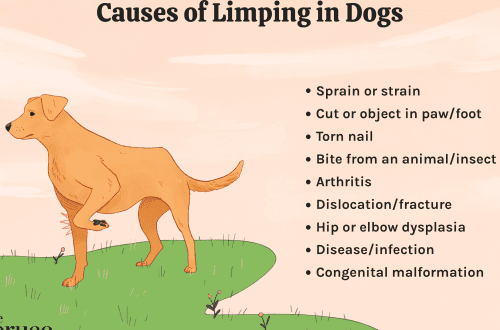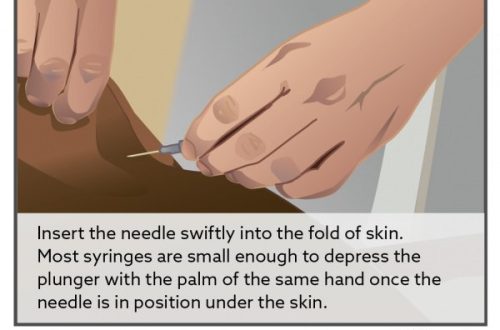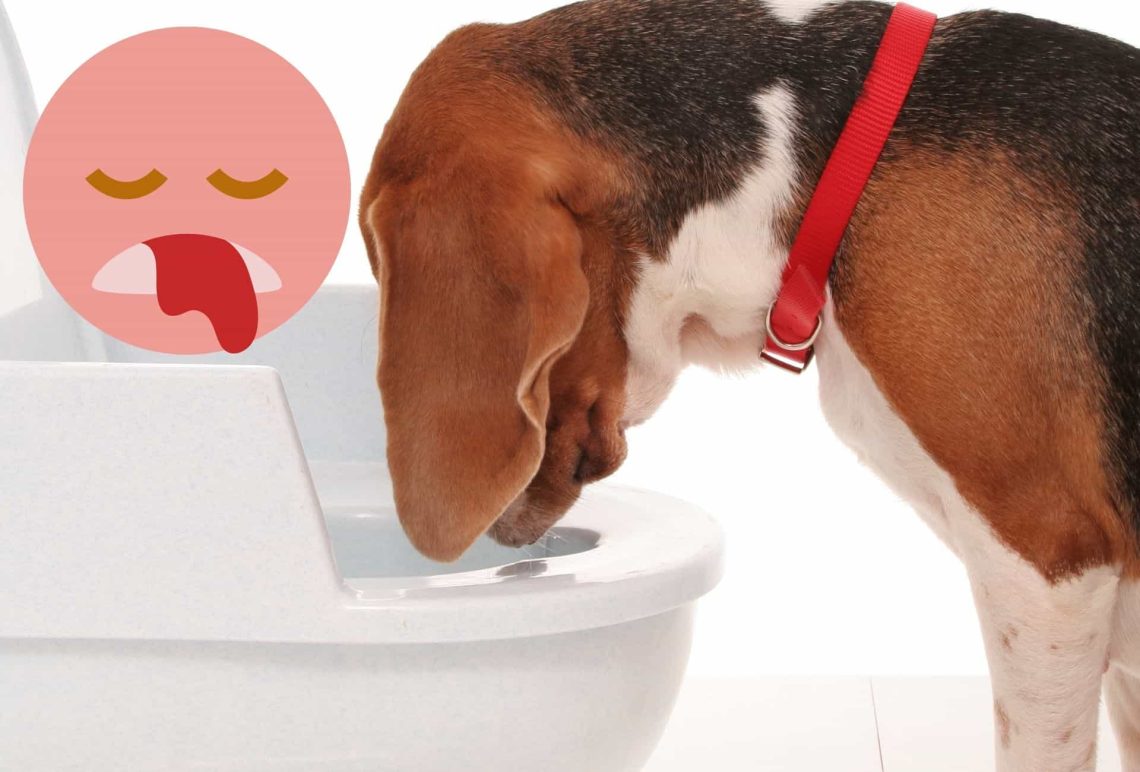
Vomiting blood in dogs

Contents
Possible manifestations
Fresh active bleeding – vomiting red blood – if the dog is vomiting scarlet blood, then this is active, profuse bleeding from the upper gastrointestinal tract.
Old bleeding – black vomit in a dog – digested blood, contents with clots from black to light brown in color is characteristic of stopped bleeding, or bleeding that manifests itself in the intestines.
Dog vomiting blood streaked, pink – vomiting of pink stomach contents is characteristic of weak or just beginning bleeding of any origin.
Dog vomiting bloody foam – as a rule, this type of vomiting indicates the presence of an injury to the lower respiratory tract, vomiting is foamy, light red in color.
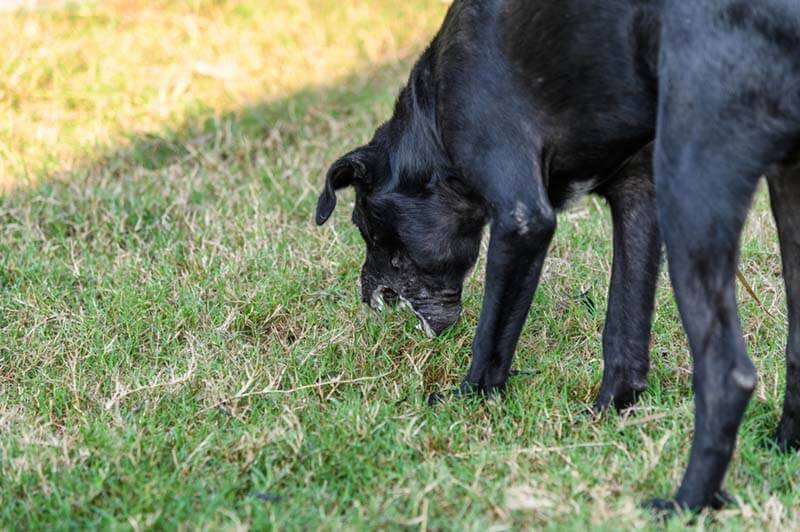
Causes of vomiting blood in dogs
Next, consider why a dog vomits blood, and what reasons may be behind it.
Coagulation disorder
A general violation of blood clotting in the body is manifested in this case by bleeding of the wall of the gastrointestinal tract. Such changes are characteristic of systemic tumor formations, poisoning with poisons, etc.
Ulcerative process
This is caused by violations of the integrity of the mucous membrane of the upper gastrointestinal tract – the esophagus, stomach, small intestine (more often – the duodenum). Usually this condition is observed with chemical burns, chronic inflammatory processes.
neoplasm
At the time of tumor decay, soft tissues begin to actively bleed (in this case, these are tumors, polyps of the upper gastrointestinal tract), as a result of which the pet vomits blood.
Foreign body
A mechanical object with sharp edges and spikes, eaten by an animal, by friction injures the wall of a hollow organ (esophagus, stomach, small intestine), thereby causing bleeding and vomiting of blood.
Long-term medication
There are medicines, long-term use of which has a secondary effect on the wall of the stomach. For example, steroid and non-steroidal anti-inflammatory, antibacterial drugs. Long-term chemotherapy can also cause a dog to vomit blood.
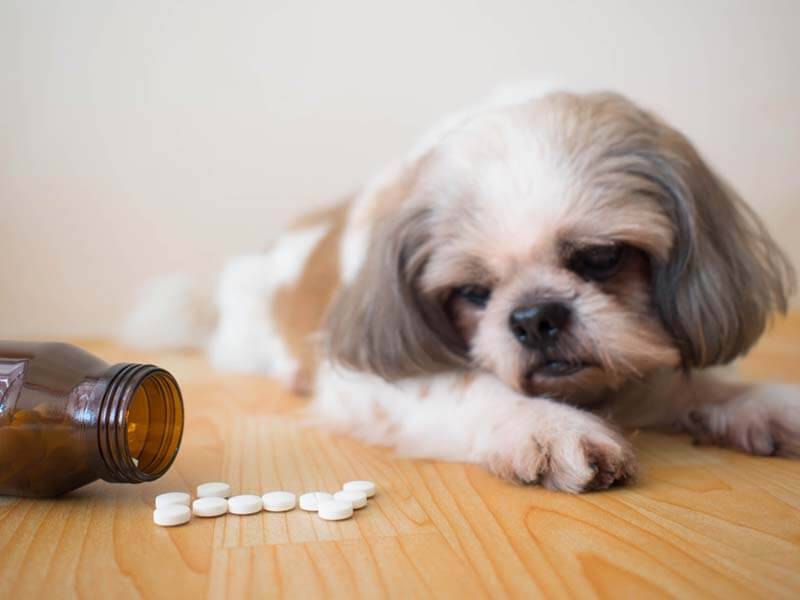
Injuries
Injury bleeding can occur in the throat, esophagus, nose, or airways. In this case, the animal swallows large volumes of blood, spitting it up after.
Prolonged vomiting (as a secondary complication)
In this case, there is catarrhal (associated with irritation of the mucous membranes) inflammation of the stomach wall due to prolonged vomiting for any reason – poisoning, food intolerance, pancreatitis, parasitic invasion, and others.
Concomitant symptoms
Lethargy, apathy, lack of appetite are the result of exhaustion by the disease and pain.
The pallor of the mucous membranes is the result of blood loss, a drop in blood pressure.
Dehydration is the result of regular fluid loss and lack of new fluid intake.
Diarrhea or black stools – Digested blood in the intestines gives the stool its characteristic color. More often this is a manifestation of gastric bleeding or indicates violations of the upper intestine.
Diarrhea or red stools indicate fresh bleeding in the lower intestines, the blood at the time of exit has not yet had time to clot and change color.

Diagnostics
Common diagnostics for a dog that is vomiting blood include:
General clinical analysis of blood – control of the level of scarlet blood, control of blood loss.
Ultrasound of the gastrointestinal tract and A-fast – a survey ultrasound examination of the abdominal organs for additional blood loss.
Coagulogram – control of the nature of bleeding, detection of violations.
Endoscopic examination of the stomach, small or large intestine, depending on the anamnesis (medical history compiled from the words of the owner) and the results of the examination.
In case of detection of signs of the presence of education, it is necessary to additionally carry out:
Selection of tumor material for endoscopic, fine-needle aspiration examination, diagnostic laparotomy. The selected material (depending on its nature) must also be sent for cytological or histological examination.
In the presence of bloody foam, a quick, emergency diagnosis is required:
X-ray of the chest and upper respiratory tract – nose, trachea.
Chest ultrasound.
Chest CT scan (if necessary for additional information).
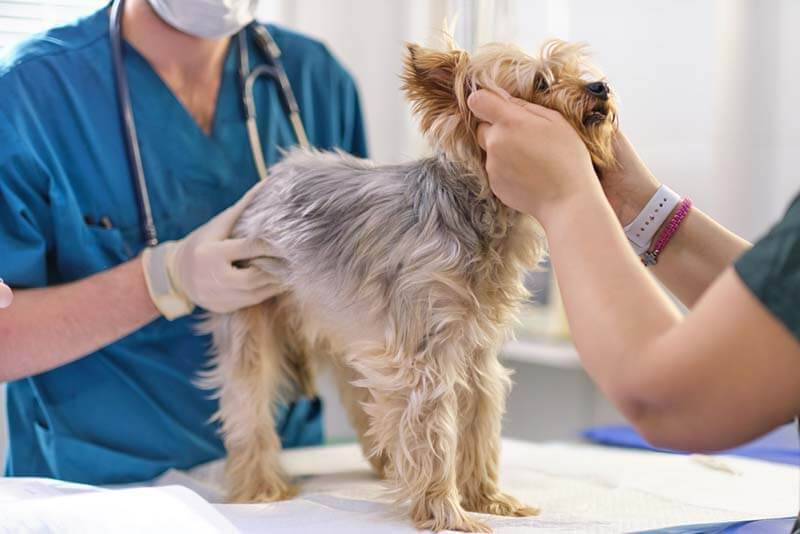
When do you need immediate veterinary help?
In itself, the manifestation of hematemesis requires emergency intervention and the help of a veterinarian, so immediately upon detection of this symptom, you should go to the doctor. Calling a specialist and examining a pet at home in this case will be of little use due to the lack of an important diagnosis.
At the appointment, the owner should give the doctor as much information as possible regarding the circumstances that could cause hematemesis in the dog – chronic diseases, facts of eating poisonous substances, free range without supervision, bones in the diet, loss of toys that the animal could eat, etc.
Treatment
Therapy will be aimed at relieving acute symptoms and stabilizing the condition of the animal:
Antiemetic therapy
The introduction of drugs that differ in the mechanism of action and perform the function of stopping vomiting. These drugs are used with caution and are selected according to the cause of the disease – inflammation of the stomach, poisoning, tumor process.
Blood transfusion
Depending on the blood parameters in the analysis, the doctor decides whether this procedure is necessary. This manipulation is necessary in case of heavy blood loss, in violation of blood clotting, tumor process, trauma.
Stop bleeding
In this case, drugs that stop bleeding are used. The type of drug is carefully selected and administered, as a rule, intravenously to accelerate the effect on the animal’s body. This therapy is necessary in order to correct further blood loss.
Antidote (antidote)
Depending on the dog’s medical history, compiled from the owner’s words, and the presence of poisoning, a drug is selected that blocks or replaces the destroyed blood factors that cause bleeding. That is, an antidote is prescribed that stops the effect of the poison on the dog’s body.
dropper
Intravenous droppers with saline solutions are used to correct water-salt disorders in the body – dehydration. This manipulation is carried out in a veterinary clinic under the supervision of doctors. Its task is to replenish the fluid lost during vomiting.
Gastroprotectors and antiulcer drugs
These agents block the secretion of stomach acid. Some of them form a protective film on the wall of the stomach. Such drugs allow the mucous membrane to heal before it again encounters the effects of digestive juices and enzymes. This therapy is used for ulcerative process, gastritis, in the postoperative period after the removal of a foreign body or surgery.
Antibacterial drugs are prescribed only if it is necessary to eliminate the secondary bacterial microflora – significant inflammatory processes, bacterial disorders.
Surgical intervention will be applied if it is necessary to remove the tumor formation, correction, perforation of the stomach wall, removal of a foreign body, etc.
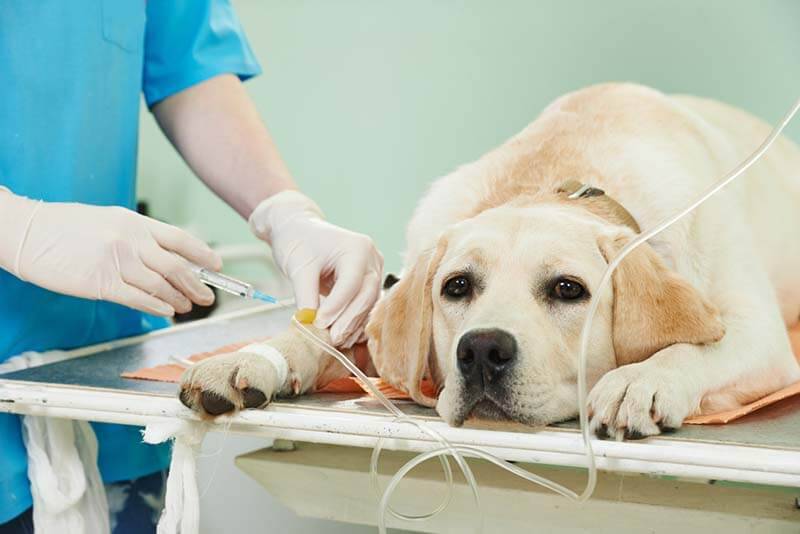
Diet
The disease in this case affects the gastrointestinal tract, so the basis of treatment is a carefully selected diet. Food can be used both natural and commercial (dry or wet). Regardless of the cause of bleeding in the stomach, the diet will be selected based on the following requests:
low content, high digestibility and protein quality
moderate fat content (up to 15%)
it is necessary to avoid the morning hungry period, and postpone the last evening feeding to the latest possible date
The question of a starvation diet remains among gastroenterologists still open. Some experts recommend for the period of exacerbation to refuse to eat, but not for long – 12-36 hours. The benefits of fasting and the absence of pathological consequences have not been proven, so more veterinarians are abandoning such a diet. The pet does not stop feeding, even during the period of exacerbation. The main thing in this situation is to find the cause of the disease and stop vomiting as soon as possible. A starvation diet to stop gastric bleeding is possible, but only under the supervision of a veterinarian.
frequent fractional feeding – depending on the nature of the disease, it is recommended to introduce frequent feeding in small portions until the condition stabilizes and the vomiting stops. The dog should be fed once every 1-4 hours, depending on the size, age of the animal and the origin of the disease.

Pet care
The first thing to do when a dog vomits blood is to put him in a comfortable position for breathing and vomiting – on his side or on his stomach with his head up. You can put a small pillow under your head.
It is worth keeping the body heat of the animal by wrapping it in a blanket or blanket.
At the time of vomiting, the head should be kept in an upright position so that the masses flow freely outward. In no case should you tilt your head up or leave the animal unattended to avoid inhalation of vomit.
Do not give the animal to drink water, so as not to provoke new vomiting. This will only make the situation worse.
In no case should you make independent decisions in the treatment of the animal, you must immediately transport it to the clinic.
Puppies vomiting blood
The younger the animal, the faster all the processes in his body, both good and bad, proceed. Therefore, if a baby shows signs of vomiting, also with blood, you should immediately contact a veterinary clinic. The causes of occurrence can be different – a foreign body, poisoning, congenital anomalies (hernia, trauma, and others).
Prevention
Finding a pet under the supervision of the owner for a walk.
It is necessary to remove all hazardous substances and household items in the house from the pet’s access – chemicals, surface treatment solutions, and others.
Annual medical examination – regular examination will allow you to detect the disease in a pet in the initial stage, when it will be much easier to stop it.
Compliance with the rules of keeping, processing and feeding the animal will prevent a lot of diseases that affect the gastrointestinal tract.
It is necessary to sort out all the toys of the pet and exclude easily chewed and eaten items from access.
Chronic diseases require regular monitoring and leading tests.
Dog vomiting blood – summary
Vomiting blood is a reason for the owner to immediately contact the clinic in order to find out the cause and prescribe prompt treatment for the pet.
A dog may spit up a variety of blood types, from scarlet (fresh bleeding) to brown or black (old bleeding, digested blood) and even frothy (bleeding from the lungs).
There are various causes that cause hematemesis: parasitic diseases, poisoning, food intolerances, autoimmune diseases, cancer, bleeding disorders, and others.
The diagnostic plan for an animal with hematemesis includes: complete blood count, blood clotting test, ultrasound examination, endoscopic examination of the gastrointestinal tract, X-ray examination and others.
Treatment and prevention of exacerbations of the disease depend directly on the cause of its occurrence, and are prescribed based on the condition of the animal. This may be surgery, diet, medical therapy and others.
Answers to frequently asked questions



